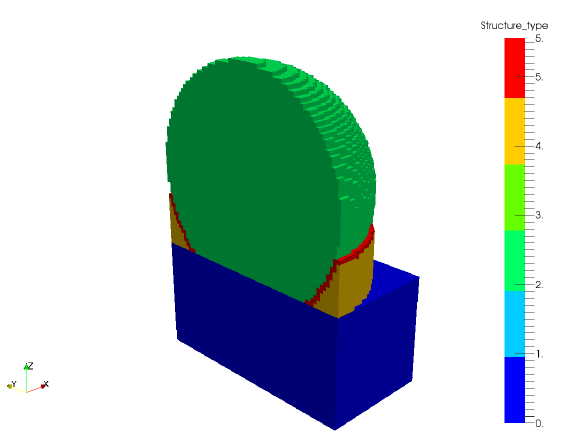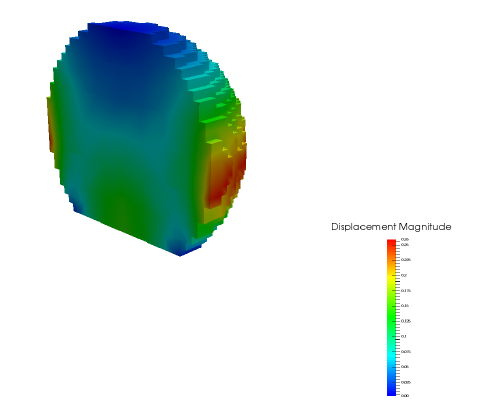First look at the m11_warning.txt and m11_recoater.txt files to investigate possible build failure. The end of the warning file should look as follows:
*** WARNING: 9 Support structure failure ------------------------------- ------------------------------- *** WARNING: 10 Support structure failure ------------------------------- ------------------------------- *** WARNING: 11 Support structure failure ------------------------------- *** WARNING: 12 Time is too close to previous time for postprocessing. Postprocessing will show artificially increased times from this increment onwards. The .out file will still show correct times
This indicates some support structure failure will occur. Further investigation of the results will be required to determine the severity of this failure.
time (s), layer group, recoater clearance (%), top z deformed coord (mm), recoater coord (mm) 1.430935E+03 1 90.476 1.188381E+01 1.192000E+01 2.861970E+03 2 90.871 1.332365E+01 1.336000E+01 4.293005E+03 3 89.202 1.476432E+01 1.480000E+01 5.694378E+03 4 85.537 1.620579E+01 1.624000E+01 7.116843E+03 5 57.511 1.765700E+01 1.768000E+01 8.547439E+03 6 81.812 1.908728E+01 1.912000E+01 9.954524E+03 7 86.276 2.052549E+01 2.056000E+01 1.130953E+04 8 90.012 2.196400E+01 2.200000E+01 1.258412E+04 9 93.537 2.340259E+01 2.344000E+01 1.375105E+04 10 96.652 2.484134E+01 2.488000E+01 1.477691E+04 11 99.985 2.628001E+01 2.632000E+01 1.563555E+04 12 107.644 2.771694E+01 2.776000E+01
This indicates that recoater interference should not be an issue for this geometry. Now look at the simulation results.
Figure 2 shows the results for the 3rd to the last increment, before any elements have been removed, after clipping the part to show the center of the build. These values correspond as follows:
0 – Build plate
1 – Powder
2 – Component
3 – Homogenized component
4 – Support structure
5 – Failed support structure

Figure 2: Structure type results
Observe that there are numerous failed supports, as indicated in both the simulation log file and the m11_warning.txt file. Let us examine the results to ensure these failures did not result in excessive distortion.
Figure 3 show the computed final distortion in millimeters, with no magnification, from the mechanical analysis (m11.in) after bolt release, after the part is removed from the build plate, and after the support material has been removed.

Figure 3 (a) After build plate bolt release

(b) After support and component release from build plate

(c) After support material removal from the component
Observing these results show that despite the support structure failure, the part has maintained a high degree of dimensional accuracy. It is good engineering practice however to check these final dimensions to the tolerances of the part with respect to its end use.